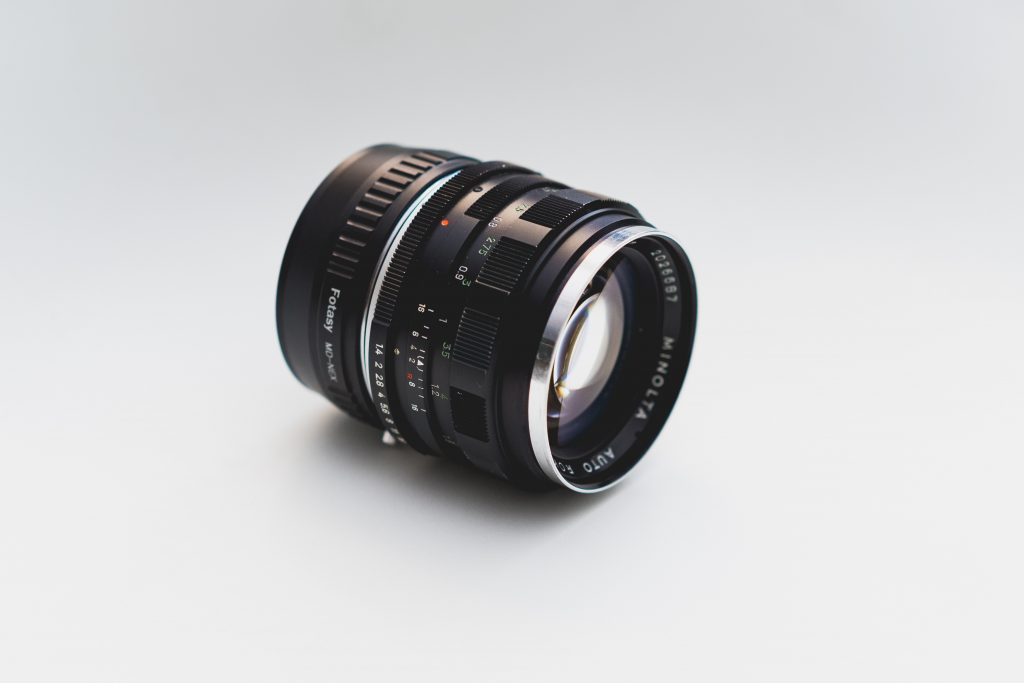
If you want to examine an online product, you can’t just pick it up off the shelf. On top of the standard presentational strategies of all sales, eCommerce shops have the extra responsibility of bringing their products to life through only a flat screen.
There are the standard ways to do this, and then there’s the original groundbreaking techniques that can set you apart. Here, we bring you nine unconventional — but effective — product photo tips to make even brick-and-mortar shops jealous.
1. Choose the Right Background
For online product photos, you often hear the basic rule “use a white background”. That’s not bad advice, but there are other options. Sometimes white backgrounds work best, but sometimes more creative choices are better.
White backgrounds emphasize the product. The lack of distraction highlights the subtle features and details of the product, allowing the shopper to better scan the picture for the areas that interest them.
The simple white background works best when the user already knows what they want. There’s no need to convince them to buy it since they already want it — they just need to see it and/or compare it with other options. Simply put, white backgrounds work for products that can sell themselves.
But what about new or lesser-known products, or even making poor-selling products more enticing? Placing the product in a contextual environment suggests reasons to buy it that the shopper may not have considered. It shows the product in a way that urges the shopper to imagine what life would be like if they buy it. That’s something brick-and-mortar shops can’t do.
This strategy can be best applied to luxury goods, most commonly jewelry or other fashion accessories. It’s also useful in targeting a new consumer group, one that is unfamiliar with your product and how it can help them.
When using a contextual environment background, be careful not to make it too flashy. The main emphasis should always be the product, so remove any background elements that steal attention. Backgrounds should complement the product, not compete with it.
So, in order to get the best of both worlds, why not combine the two strategies: include both a white background and contextual environment picture in the photos.
2. Realism
Lately, more and more ecommerce shops are stepping away from the glorified, perfect-world images of traditional marketing and trying grittier, more realistic product photos. Millennials are less trusting of traditional advertising and marketing approaches, and in an attempt to reach them, e-shops are eager to strip away the BS.
On top of that, photo-centric social media sites like Instagram have brought photographic culture mainstream, and realistic product photos just seem more modern and up-to-date with today’s trends.
3. High Quality for Fine Details
In a fascinating but also not-surprising report, MDG Advertising found that 67% of buyers consider image quality “very important.” This coincides with the increase in online shoppers with HD devices and retina screens, which make even standard quality images seem dull. It’s not just the content details you must consider, but the technical ones as well.
Again to offset the difficulties online stores have showcasing the facets of their products, higher quality images allow shoppers to see the fine details of products as they would if they were physically present. Shoppers can understand features like material texture, consistency, or flexibility that brick-and-mortar stores take for granted.
4. Eyeless Models
Not everyone understood the logic behind headless mannequins when they first appeared, but their effectiveness has kept the practice a sales staple for decades. Now ecommerce stores are using the same principle in their product photos.
Headless mannequins help the buyer imagine themselves in the clothing for sale, while retaining the benefit of seeing the clothes in a human form rather than a hanger. Remove the head and the shopper fills in what’s missing — or at the very least, the lack of distraction from facial features, which our eyes are instinctively drawn to, makes it easier to focus on the product.
The same principle can be applied with cropping the eyes, or entire head, off models in product pictures. This keeps the focus away from irrelevant distractors and engages the shopper’s imagination.
In photos with faces, shoppers may form opinions of the product based on the model instead of the clothes. The eyes make the model into another human, which opens a whole pandora’s box of social issues that’s best left out of shopping decisions.
5. Lookbook
As mentioned in the first tip, contextual environment photos help the user imagine what it would be like for them to own the product. Lookbooks take this principle to its extreme, mixing a thematic photographic shoot with product exhibition.
When done well, lookbooks are entertaining enough to be viewed on their own, and shoppers can forget that they’re browsing a catalog selection.
6. Secondary Objects
There’s no rule that the product must be the only object in a product photo. Adding a secondary object can further establish context, give usage suggestions, evoke imagination, add an artistic touch, or simply set the scale for size.
7. Angle & Focus
Forgetting the disadvantages of online shopping, the power of controlling how the product is viewed can be used to your advantage. Product photos open a lot of doors for the same artistic techniques of classic photography to be applied to marketing.
Take, for example, two photography staples: angle and focus. The same object shot from different angles can appear either intimidating or pathetic, mythic or mundane. Likewise, the literal focus of the picture — and equally important, what’s out of focus — can suggest meanings and interpretations that escape a photo with focal balance.
Moreover, this angle/focus duo (and the shadows) add a depth and realism most other product photos can’t reach.
8. Animation/Video
The eye is attracted to movement, so moving beyond standard static product photos is a great way to get your products noticed. This strategy is still new and groundbreaking, with better technology enabling more bandwidth to sites. What we’re seeing now is just the beginning, and pioneering eshops can go as far as their imagination takes them.
… just be careful of loading times. For now, simpler is better.
9. Combined with Illustrations
We’ll end with a more fun strategy, though not applicable to every instance. Illustrations in general are becoming a popular trend in web design lately, and product photos are no exception.
Combining products with illustrated backgrounds makes them more delightful and lively, and can help establish mood. When done well, illustrated background can utilize benefits from both backgrounds described above: the minimal distractions and dominant empty space of white backgrounds, combined with the ability to establish context from contextual environments.
Takeaway
Taking a step back from the specific techniques, we can see two broad, overlapping trends in product photography:
- Photos are drawing more on setting the context of usage than just showing the product.
- Photos are incorporating more artistic techniques from classical photography (and illustration).
These usher in a new era for product photography, one with greater power and potential. The traditional ways of eShops are no longer enough, so maybe now’s the time to reconsider your tactics. These 9 techniques above aren’t the only ones, and now is the time to be innovative.
Photo by Dan Gold on Unsplash.






